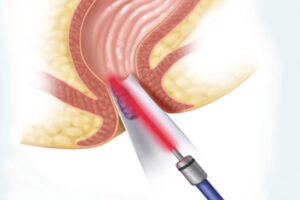What is Hemorrhoids ?
It is a disease caused by the loosening of the veins around the breech and their sagging outward. It can cause a decrease in a person’s quality of life. Hemorrhoids can occur for many different reasons.
Symptoms and Treatment
- There are common hemorrhoid symptoms such as difference in defecation habits, bleeding from the rectum and pain. When these symptoms appear, we should go to the doctor immediately.
- Hemorrhoids can be seen in two different types, external hemorrhoids and internal hemorrhoids. It is a disease that occurs from time to time in one out of every four people in the society.
- If it is on the outside of the anus and under the skin, it is defined as external hemorrhoids. It causes pain.
- In the last part of the large intestine, it is called internal hemorrhoids. It doesn’t cause pain.
What is Hemorrhoids?
It is a disease caused by problems in the anus or anus veins located after the large intestine. Hemorrhoids, which is a disease similar to varicose veins in the legs, is caused by the enlargement or swelling of the veins in the anus or anus area.
In the disease that causes the formation of vascular clumps, vascular clumps may protrude from the anus from time to time. In some cases, vascular balls may bleed due to compression.
Hemorrhoids is a curable disease. However, when it is not treated, the tangles formed by the veins over time go out of the anus and cause the structure called hemorrhoids to appear.
What are the Stages of Hemorrhoids?
It is extremely important to know the stages of hemorrhoids, as the treatment of hemorrhoids is done in different ways according to the stage of the disease.
Hemorrhoids consist of a total of 4 stages:
Stage 1: In some cases in stage 1, which is characterized by bleeding that will contaminate the toilet paper, drip hemorrhoids can also be seen. Hemorrhoid tissue, which can be seen with rectoscopy, is not visible to the naked eye. In other words, at this stage, hemorrhoids do not protrude beyond the anus.
Stage 2: Hemorrhoids protrude during defecation and then go in by itself. Therefore, the person may not notice hemorrhoids.
Stage 3: The formation defined as the hemorrhoid breast is outside the anus. Painful hemorrhoids often lead to edema. The hemorrhoids nozzle enters the anus only when pushed with a finger.
Stage 4: In Stage 4, which is the stage when the hemorrhoid comes out of the anus, the hemorrhoid breast is usually large and wet. After defecation, the person cannot be completely cleaned. As a result, the person often sees stains on his underwear. Pain may occur while sitting.
External Hemorrhoids Symptoms
- Seeing blood in the stool,
- Swelling or painful lump around the anus,
- Itching and discomfort around the anus,
- Pain that increases with sitting.
Internal Hemorrhoids Symptoms
- Seeing blood in the stool,
- The presence of blood in the form of staining on the toilet paper,
- The sagging of hemorrhoids from the rectum.
Symptoms of hemorrhoids can be seen in different diseases of the digestive system besides hemorrhoids. It can also be seen especially in rectal bleeding, ulcerative colitis, Crohn’s disease, colon or rectum cancers.
Therefore, hemorrhoids should not be treated with herbal treatment methods or with hemorrhoids, which are used without consulting a physician.
What Causes Hemorrhoids?
Veins in the anal canal are defined as hemorrhoids. With the enlargement or swelling of the veins, it causes symptoms such as bleeding, pain and / or itching in the person. The disease, which is rare before the age of 20, is mostly seen in people between the ages of 45 and 65. Hemorrhoids, which are very common in the community, mostly occur due to prolonged constipation and spending a lot of time on the toilet.
Difficulty during defecation affects blood flow in the area. Over time, the blood in the veins pools in the area, leading to the formation of hemorrhoids. This is also the cause of hemorrhoids during pregnancy.
How is Hemorrhoid Diagnosed?
Most of the people who have hemorrhoids problem are hesitant to go to the doctor. Therefore, the person tries to relieve his discomfort by using hemorrhoid cream or medicine that he hears from his surroundings.
At this point, one of the frequently asked questions is “Which doctor to go to?” is in the form.
For hemorrhoids, the person should apply to the general surgery outpatient clinic. The physician first listens to the person’s history and then performs a physical examination. In the presence of external hemorrhoids, the diagnosis can be made quickly. For the diagnosis of internal hemorrhoids, additional tests such as anal canal – rectum examination or colonoscopy may be required. As a result of the findings obtained, the diagnosis is made.
How to Treat Hemorrhoids?
External hemorrhoids may not need to be treated if they do not cause discomfort or reduce the person’s quality of life. Internal hemorrhoids are treated with medication. The stage of hemorrhoids also causes differentiation of the treatment method of the disease. Treatment of 1st and 2nd stage hemorrhoids is mostly done with medication.
For treatment, the physician may prescribe drugs in the form of creams, ointments or tablets. These drugs relieve burning, pain or swelling in the breech area, relax the breech muscles and relieve hemorrhoids.
Another non-surgical treatment method is a sitz bath. In this form of treatment, which is applied by sitting in a bathtub filled with warm water, the hemorrhoids are relieved.
In the treatment with sclerotherapy, sagging can be removed by injection into the area.
Apart from these, procedures that require various daily interventions can also be performed in 2nd and 3rd stage hemorrhoids. Which procedure to do is decided after the examination and evaluations. In the 3rd and 4th stage hemorrhoids, the treatment is done with hemorrhoid surgery.
Today, these surgeries are performed with Laser. It is possible to leave the hospital on the same day without any pain and without any pain. You can return to social life the next day. The results of the surgery performed with laser are very successful. The probability of recurrence is 1%.







